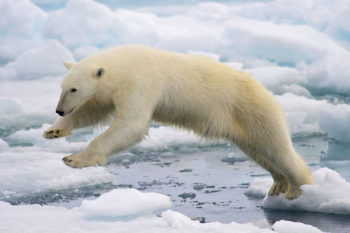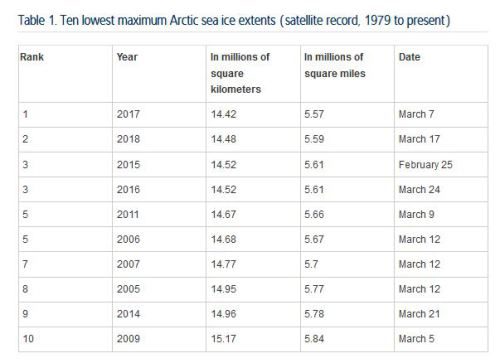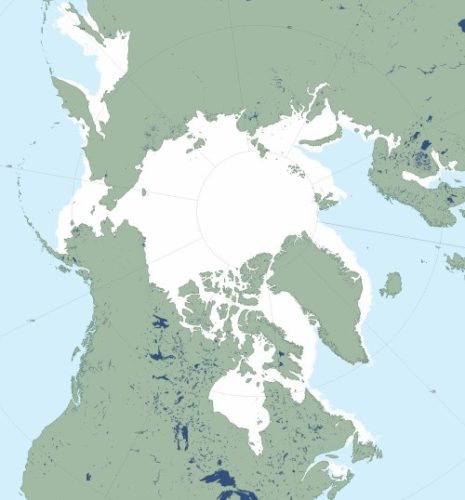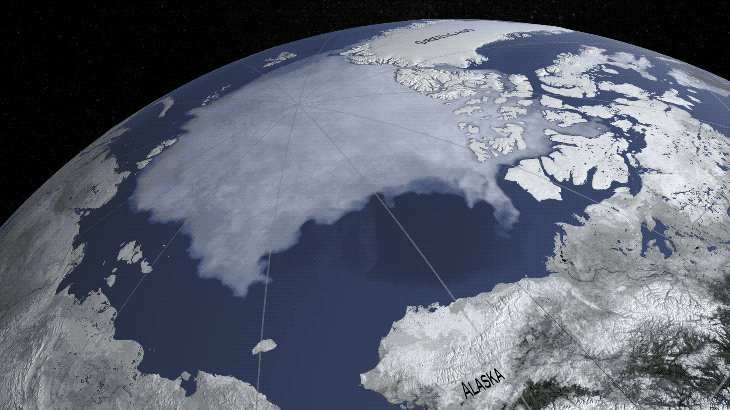
NASA’s 23 March 2018 announcement regarding the Arctic sea ice maximum this year:
“Sea ice in the Arctic grew to its annual maximum extent last week, and joined 2015, 2016 and 2017 as the four lowest maximum extents on record, according to scientists at the NASA-supported National Snow and Ice Data Center (NSIDC) and NASA.”
Except, what they don’t tell you is that 2006 had almost the same extent as 2018 and 2006 wasn’t far behind according to the official, averaged data presented at NSIDC’s Arctic Sea Ice News & Analysis:
Current conditions at the winter maximum (at 17 March 2018, from NSIDC Masie, extent measured at 14.7 mkm2, using software able to discern more ice than used for the figures in Table 1), shown below:
Compare to the winter maximum (at 12 March 2006, from NSIDC Masie, measured at 14.6 mkm2), shown below (original here), where virtually all of the difference is in the extent of Bering Sea ice:
Keep in mind that the difference between the extent in 2018 and 2006 is 0.26 mkm2: about the size of New Zealand. In comparison, the total ice extent for 2018 was the size of Canada plus Greenland, Mexico, and Poland put together.
In other words, the differences in extent between these years are trivial and have had no discernable effect on the health or survival of polar bears (Crockford 2018): they are not biologically meaningful.
There is no evidence that the average ice extent marked on the NASA animation below is optimal for any Arctic species or even the minimal amount of winter ice necessary for their survival.
In fact, polar bear specialists never expected any negative effects to occur due to the small expected declined in winter sea ice (Amstrup et al. 2007, 2008; Durner et al. 2007; Wiig et al. 2015). Anyone suggesting otherwise (e.g. here and here) is simply fearmongering.
This NASA Earth animation of winter ice growth to the maximum this year is interesting to watch since the usual approach is to show ice melting:
Read more at Polar Bear Science





















Remember the Arctic was suppost to be Ice Free by now if you beleive Al Bore and his mindless babbling or read his putrid poem